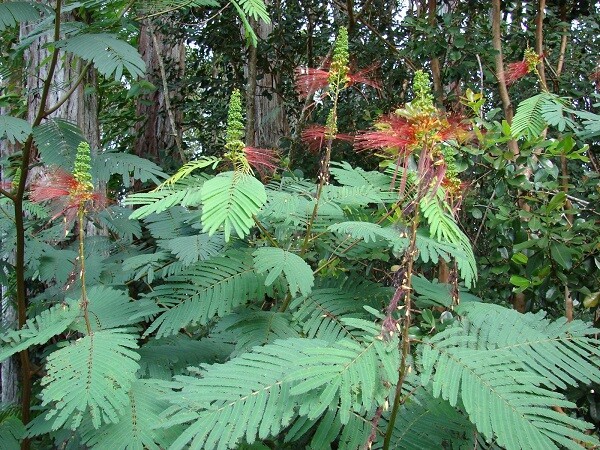

Fodder trees and shrubs,such as Calliandra are rich in protein for dairy and beef cattle, chicken and pigs. Other fodder trees and shrubs that farmers should grow include leucaena, desmodium, and fodder crops like sweet potato vines and other legumes. 3 kg of tree fodder and other legumes such as Calliandra calothyrsus is one of the useful fodder shrubs you can grow in your farm.
This is a thornless leguminous fodder shrub that originated from Central America and is an important tree species that can be used as a substitute for commercial dairy meal. Its main advantages are that it is easy to grow and manage, grows fast, is tolerant to acidic soil and helps fix nitrogen in the soil. Farmers can cut its branches repeatedly to feed to dairy cows and goats, and these grow back very quickly.
Conditions for growth. Calliandra grows to a height of 4 to 6 metres. It requires rainfall that is above 1,000mm per year; the plant is not very drought tolerant although it can withstand dry periods. It can also tolerate some shade but grows best in open areas. The plant also grows in a wide range of soils, but for better growth it requires well-drained soils, and does not tolerate water logging.
Planting and management
Calliandra can be planted between upper-storey shrubs on farm boundaries, in hedges around homesteads, on contour bunds, and in lines between Napier grass. Transplant seedlings from the nursery (when they are 0.2m to 0.3m in height).
Plant them in rows of about 0.3m spacing between plants. Use manure and water the seedlings adequately. Calliandra trees are cut back at a height of 2m to between 0.15m and 1m to improve foliage which is used as fodder for livestock.
Pests and disease control
Calliandra is fairly resistant to pests and diseases. However, some fungal pathogens like Armillaria mellea can cause root rot in cool and high altitude areas. Affected plants should be uprooted and burnt.
Harvesting
Fodder is ready for harvesting in about 9 – 12 months after planting depending on the region. It is possible to have 4 to 6 harvests per year. Use a panga or secateurs (pruning scissors). Letting animals eat the leaves or young branches directly is not recommended as they may destroy the plants.
Leaves and young branches should be cut when they are about 3 feet. After about 12 years, you should replace the plants with new ones. One disadvantage of this shrub is that it does not produce large amount of seeds. Farmers who wish to collect seeds should do so very carefully since the seeds are naturally dispersed far away from the tree as the pods split suddenly.
Feeding animals
One kilogramme of dry calliandra has the same amount of digestible protein as about 1 kg of dairy meal. On a fresh weight basis, 3 kg of calliandra is equivalent to about 1 kg of dairy meal and the effects of calliandra and dairy meal have been found to be supplementary, suggesting that the two feeds are nutritionally interchangeable. A farmer would need about 500 shrubs to feed a dairy cow throughout the year at a rate of 2 kg dry matter (6 kg fresh material) a day. Because it has high levels of tannin (a bitter substance), calliandra should only be fed to ruminants like cows, goats and sheep. It is therefore not easily digested by non-ruminants like pigs, rabbits and chickens.
Other uses
Apart from feeding dairy animals, calliandra is useful in improving the soil nutrient levels and is useful for the reforestation of bare areas that are prone to soil erosion. Calliandra wood is also good for fuel as it grows quickly, burns well and can be used to produce charcoal. The poles can also be used in supporting climbing beans. In addition, the leaves can be used for mulching and as green manure for other crops since it adds nitrogen to the soil. Its flowers provide nectar for bees, and the honey produced is said to be of good quality.
 Contact Jaguza Support
Contact Jaguza Support